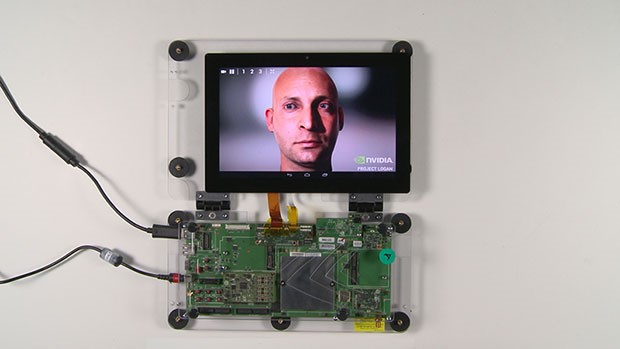Logan uses a Keplar architecture which allows power consumption of one third the GPUs currently used in Retina iPads. It is also supports the new OpenGL 4.4, OpenGL ES 3.0, and DirectX11.
This is a pretty exciting time for mobile devices, power consumption going down and processing power going way up it will be amazing to see what they bring to us next.
A few key points direct from nVidia:
• Tessellation – which creates geometry dynamically and efficiently on the GPU from high-level descriptions, sizing triangles optimally based on the user’s viewpoint. By comparison, fine detail in a traditional pre-generated approach is inefficient, requiring excess geometry to deal with all possible viewpoints.
• Compute-based deferred rendering – which calculates the effect of all lights in the scene in a single deferred rendering pass. This OpenGL 4 capability greatly improves deferred rendering efficiency and scalability compared to current OpenGL ES-based implementations, which require an extra pass for each light source in the scene. The scalability of the compute-based approach also paves the way to even more advanced lighting models, such as using virtual points of lights to approximate global illumination effects.
• Advanced anti-aliasing and post-processing algorithms – which deliver better image quality, particularly in areas of very sharp color contrast, by making multi-sampling more programmable and allowing applications to implement their own anti-aliasing filters. These also enable more efficient film-quality post-processing effects, such as motion blur and depth of field.
• Physics and simulations – which simulate the physical behavior of rendered objects, such as calculating rigid-body dynamics or animating particles of smoke. This enables gamers to enjoy more detailed, fully interactive virtual worlds not previously possible on mobile devices.
[Ed - This new mobile GPU further hammers home the fact that most of the major players are aiming at the mobile market. However, it is important to note that they are not ignoring the desktop like many have been suggesting. It is simply that smaller form factor systems with a higher graphical demand are going to enter the consumer space in the next few years thanks to 4k video and a number of games that are rumored to be on the horizon. For the next 12-18 months the grahics space will be the place to watch as the CPU side is pretty well covered wether it is by ARM, Intel or even AMD...]
Tell us what you think in our Forum




